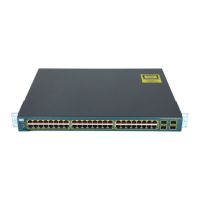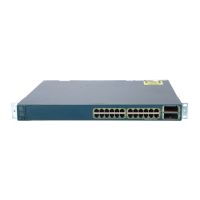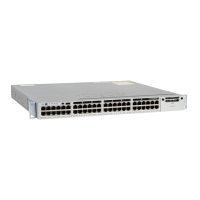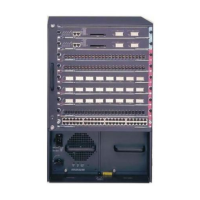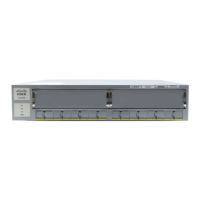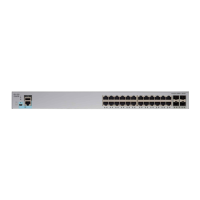36-8
Catalyst 3750 Switch Software Configuration Guide
78-16180-02
Chapter 36 Configuring IP Multicast Routing
Multicast Routing and Switch Stacks
Multicast Routing and Switch Stacks
For all multicast routing protocols, the entire stack appears as a single router to the network and operates
as a single multicast router.
In a Catalyst 3750 switch stack, the routing master (stack master) performs these functions:
• It is responsible for completing the IP multicast routing functions of the stack. It fully initializes and
runs the IP multicast routing protocols.
• It builds and maintains the multicast routing table for the entire stack.
• It is responsible for distributing the multicast routing table to all stack members.
The stack members perform these functions:
• They act as multicast routing standby devices and are ready to take over if there is a stack master
failure.
If the stack master fails, all stack members delete their multicast routing tables. The newly elected
stack master starts building the routing tables and distributes them to the stack members.
Note If a stack master running the EMI fails and if the newly elected stack master is running the
SMI, the switch stack will lose its multicast routing capability.
For information about the stack master election process, see Chapter 5, “Managing Switch Stacks.”
• They do not build multicast routing tables. Instead, they use the multicast routing table that is
distributed by the stack master.
Configuring IP Multicast Routing
These sections describe how to configure IP multicast routing:
• Default Multicast Routing Configuration, page 36-8
• Multicast Routing Configuration Guidelines, page 36-9
• Configuring Basic Multicast Routing, page 36-10 (required)
• Configuring a Rendezvous Point, page 36-12 (required if the interface is in sparse-dense mode, and
you want to treat the group as a sparse group)
• Using Auto-RP and a BSR, page 36-22 (required for non-Cisco PIMv2 devices to interoperate with
Cisco PIM v1 devices))
• Monitoring the RP Mapping Information, page 36-23 (optional)
• Troubleshooting PIMv1 and PIMv2 Interoperability Problems, page 36-23 (optional)
Default Multicast Routing Configuration
Table 36-2 shows the default multicast routing configuration.

